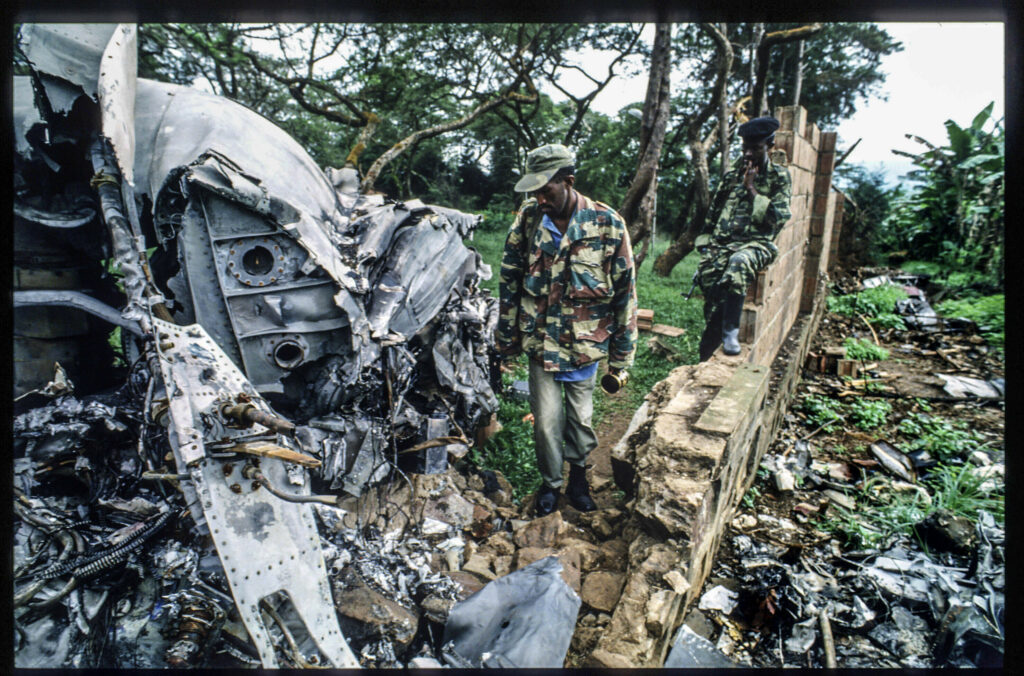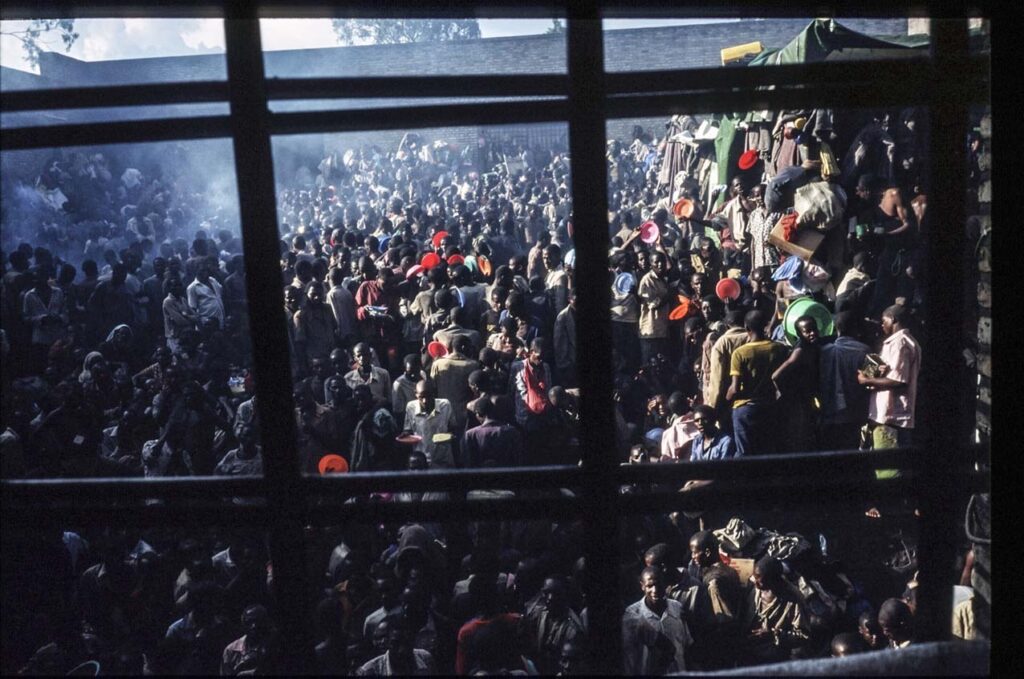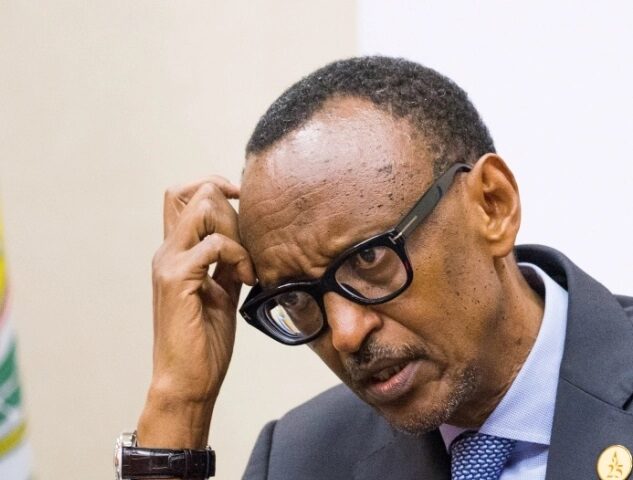By Spy Uganda Correspondent
For years, UN investigators secretly compiled evidence that implicated Rwandan President Paul Kagame and other high-level officials in mass killings before, during and after the 1994 Rwandan genocide.
The explosive evidence came from Tutsi soldiers who broke with the regime and risked their lives to expose what they knew. Their sworn testimony to a UN court contradicted the dominant story about the country’s brutal descent into violence, which depicted Kagame and his RPF as the country’s saviours.
READ ALSO: Kagame Hunts Again: Three More Rwanda Genocide Suspects Arrested, Charged In Belgium

Despite the testimonies, a UN war crimes tribunal — on the recommendation of the United States — never prosecuted Kagame and his commanders. Now, for the first time, a significant portion of the UN evidence is revealed, in redacted form.
The redacted witness testimonies are available here.

In Details
In early July 1994, as the genocide in Rwanda was nearing its end, Christophe, whose real name and location are being withheld for safety reasons, was recruited by the Tutsi-led Rwandan Patriotic Front (RPF).
Christophe, a medical student before the war, was assigned to care for wounded RPF soldiers in Masaka, a neighbourhood in the southeast of Rwanda’s capital, Kigali.
READ ALSO: Kagame Arrests 8 Medics For Concealing Genocide Mass Grave In Hospital Compound
From his battle clinic in Masaka, though, Christophe saw that the killings were continuing. “People were disappearing,” he recently told the Mail & Guardian. Many of the new recruits Christophe treated began to share sobering details about what they were being ordered to do to Hutu civilians — men, women and children who had no apparent connection to the killing of Tutsis. These Hutus were being arrested in different areas of the capital by RPF officials, they said, and brought to a nearby orphanage called Sainte Agathe, where they were summarily executed.

As the massacres continued, Christophe became worried that as a witness he, too, could be a target. Some soldiers, traumatised by what they were forced to do, tried to escape Gabiro. But they were caught and executed, he said. To his relief, in April 1995, he was transferred out of Gabiro, and a week later, he fled Rwanda and never returned.
READ ALSO: France Backs UN Trial For Rwanda Genocide Suspect Kabuga
Several years after leaving, Christophe began speaking to investigators from the UN International Criminal Tribunal for Rwanda (ICTR). The tribunal, set up in the aftermath of the genocide, was tasked with prosecuting the most serious crimes committed in 1994.
Publicly, the tribunal focused exclusively on prosecuting high-level Hutu figures suspected of organising and committing genocide against Tutsis. But privately, a clandestine entity within the ICTR, known as the Special Investigations Unit (SIU), gathered evidence of crimes committed by the RPF. By 2003, investigators at the SIU had recruited hundreds of sources, with dozens giving sworn statements as a sample seen below.

According to a summary report submitted to the ICTR’s chief prosecutor in 2003, the SIU’s investigative team had gathered explosive evidence against the RPF. Numerous witnesses corroborated Christophe’s testimony that the RPF had engaged in massacres of Hutu civilians in Gabiro and elsewhere before, during, and after the genocide. Sources testified to the SIU that the RPF was behind the 6 April 1994 attack on Habyarimana’s plane.
READ ALSO: Remains Of Rwanda Genocide Suspect Bizimana Found In DR Congo

Former soldiers even told investigators that RPF commandos undertook false flag operations. Some commandos, operating in civilian clothes, had allegedly infiltrated Hutu militias, known as Interahamwe, to incite even more killings of Tutsis in a bid to further demonise the Hutu regime and bolster the RPF’s moral authority in the eyes of the international community.
-

A crowd of prisoners stand at mealtime in the Giterama prison 1995 in Rwanda. - Taken as a whole, the evidence collected by the SIU suggests that RPF killings were not a reaction to the killing of Tutsis but instead were highly organised and strategic in nature. If proven by a court, the RPF not only played a seminal role in triggering the genocide by shooting down Habyarimana’s plane; its senior members also engaged in widespread, targeted massacres of civilians before, during and after the genocide.
READ ALSO: Prosecutor Opposes Transfer Of Rwanda Genocide Fugitive Kabuga To UN Custody

Neither the RPF, the Rwandan president’s office, the Rwandan Media High Council, nor Nyamwasa responded when asked for comment on the documents. On Twitter, Yolande Makolo, an adviser to Kagame, dismissed an M&G query about the documents and called the questions “ridiculous”.
The Gabiro Massacres
Other witnesses bolstered Christopher’s account, providing testimony that the RPF began killing at Gabiro in April 1994, shortly after Habyarimana was assassinated. Speaking to investigators in French, one witness, a former soldier who joined the RPF in 1992, told investigators that displaced Hutu civilians from villages in northern Rwanda were brought to Gabiro aboard tractor-trailer trucks, and left at a residential complex called the House of Habyarimana, 3km from the military camp.
The intelligence officer selected the intelligence staff and instructors to execute the people brought by trucks … The soldiers tied their elbows behind their backs, and one by one, made them walk to a ‘grave site’ above the House of Habyarimana, where they were shot … These summary executions were done day and night between four and five weeks that I was there … By the end of April, early May, after two weeks of summary executions, the smell of corpses reached the Gabiro camp. Two bulldozers were used to bury the bodies.
The witness said he participated in burning bodies using a mixture of oil and gasoline to turn the corpses into ash in a forest near another training camp called Gako. The soldier in question said a lieutenant called Silas Gasana who was in charge of security for a man referred to as “PC-Afandi”, oversaw the killings at Gabiro. “PC-Afandi” is a military moniker for Kagame, according to former members of the RPF who were separately interviewed on the topic.
READ ALSO: Rwandan Genocide Suspect Kabuga To Be Arraigned In Paris Court
The witness told investigators that Gasana was in communication with Nyamvumba, who at the time was the operations commander and chief instructor at Gabiro.
Another former RPF soldier who was sent to Gabiro in mid-April 1994 told the tribunal:
Many trucks came from different regions around the camp. Recruits who went to get firewood could see these trucks pass. In two instances, while I was about a kilometre from our camp looking for wood, I personally observed these trucks. They were tractor-trailers, or semi-trailers. The vehicles had 18 or 24 wheels with no licence plates. They drove past me, very close. They were full of men, women, children and old people. They were brought to an area near the houses of the former head of state, near the Gabiro airstrip, and massacred.
The witness said the victims were from northern areas of Rwanda and were killed so that Tutsi refugees living in Uganda could acquire their land. The testimony highlighted the RPF’s alleged practice of falsely blaming Hutus for atrocities they didn’t commit.
The main objective of these massacres … was to prepare the land and pastures for the people who had been [Tutsi] refugees in Uganda and who were repatriated. Until today, anyone [that is Hutus] who might think of living there without having returned from Uganda, would run the risk of being accused of being an Interahamwe.
Other witnesses spoke of killings at the military camp on the edge of the park. A former intelligence officer described Gabiro as a main “killing hub”.
READ ALSO: Here Is Why ‘Hotel Rwanda’ Hero Rusesabagina Has Been Denied Another Bail & Ordered To Face Trial
The officer took part in operations in Giti, in northern Rwanda, from April 1994, in an area where no Tutsis had been killed during the genocide. Despite the commune being safe for Tutsis, RPF special forces killed up to 3 000 Hutus there, he testified.
Between two and three thousand [civilians] were executed in the commune of Giti, and were buried in mass graves and latrines. Thousands of other victims were brought to Gabiro. It was a killing hub, above all isolated and near Akagera Park … At one point, victims from areas surrounding Giti began to arrive in military trucks, on their way to Gabiro, where they were simply eliminated.
Massacres In Northern Rwanda Before The Genocide
A number of former RPF soldiers testified that Hutu civilians were attacked prior to the genocide, in particular in northern Rwanda.
READ ALSO: Rwandan President Concerned About Threat To E. African Integration, Regional Security
One soldier said that as soon as the RPF seized an area — which he referred to as a “liberated zone” — Hutus living there were systematically slaughtered.
The [RPF] was convinced that Hutus were uncontrollable, so it was better to get rid of them. That’s why a systematic ethnic cleansing was organised in these ‘liberated zones’. Two methods were used to achieve this goal. The RPF would organise murderous attacks, where hundreds of Hutu peasants were killed. The survivors would then flee and empty the zone. The RPF would also spread rumours about imminent attacks, a tactic that would cause peasants to flee.
An RPF soldier who served in the northwestern region near Ruhengeri testified that in 1993, the purpose of his unit was to “kill the enemy and bury or burn their corpses.” The soldier said he was part of this unit until August 1994.
The goal of our group was to kill Hutus. That included women and children. We killed many people, maybe 100 000. Our unit killed on average between 150 and 200 people a day. People were killed with a cord [around their neck], a plastic bag [over their head], a hammer, a knife, or with traditional weapons [machete, panga]. The bodies were then put into mass graves or sometimes burned.
In their summary report, SIU investigators cited a host of methods used by the RPF to kill victims, including strangling them with cords, smothering them with bags, pouring burning plastic on their skin, and hacking Rwandans with hoes and bayonets.








